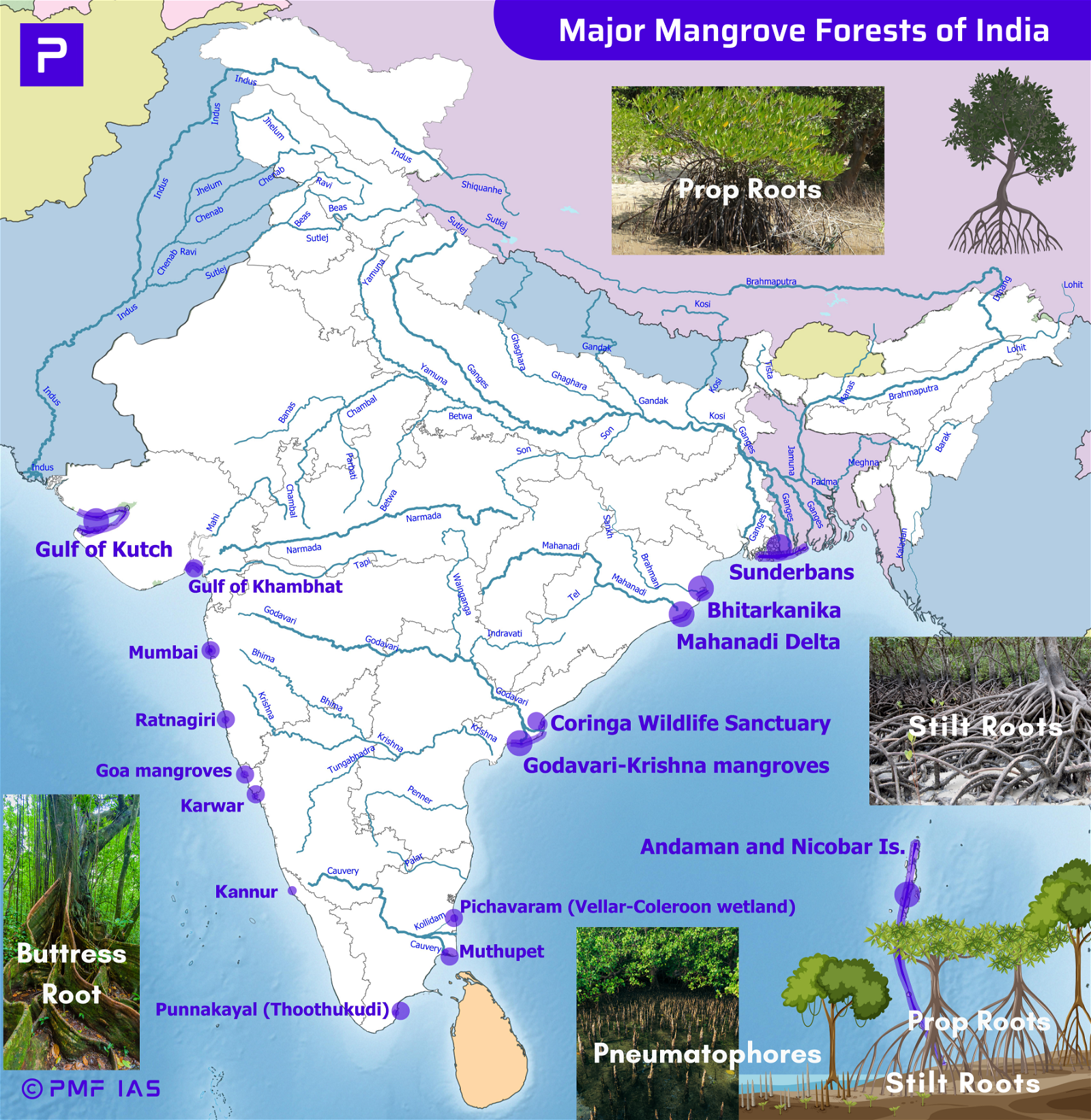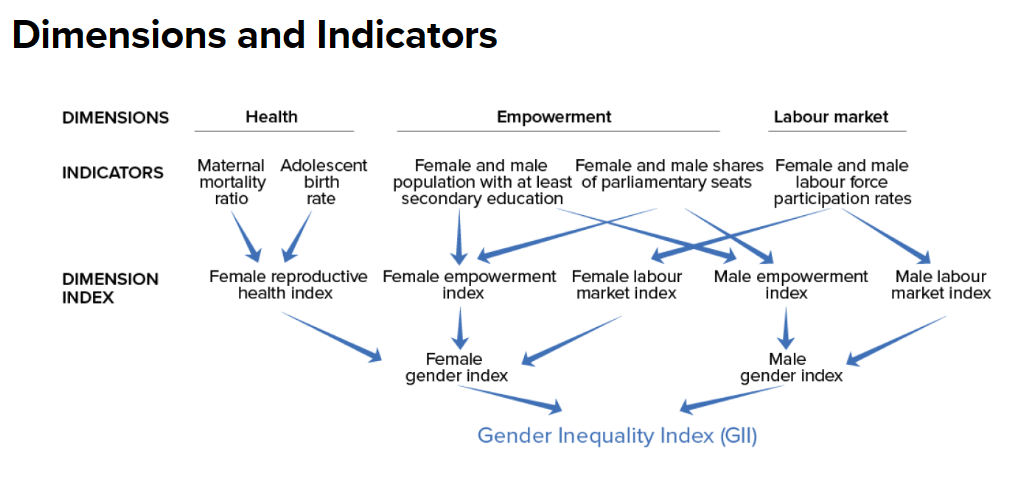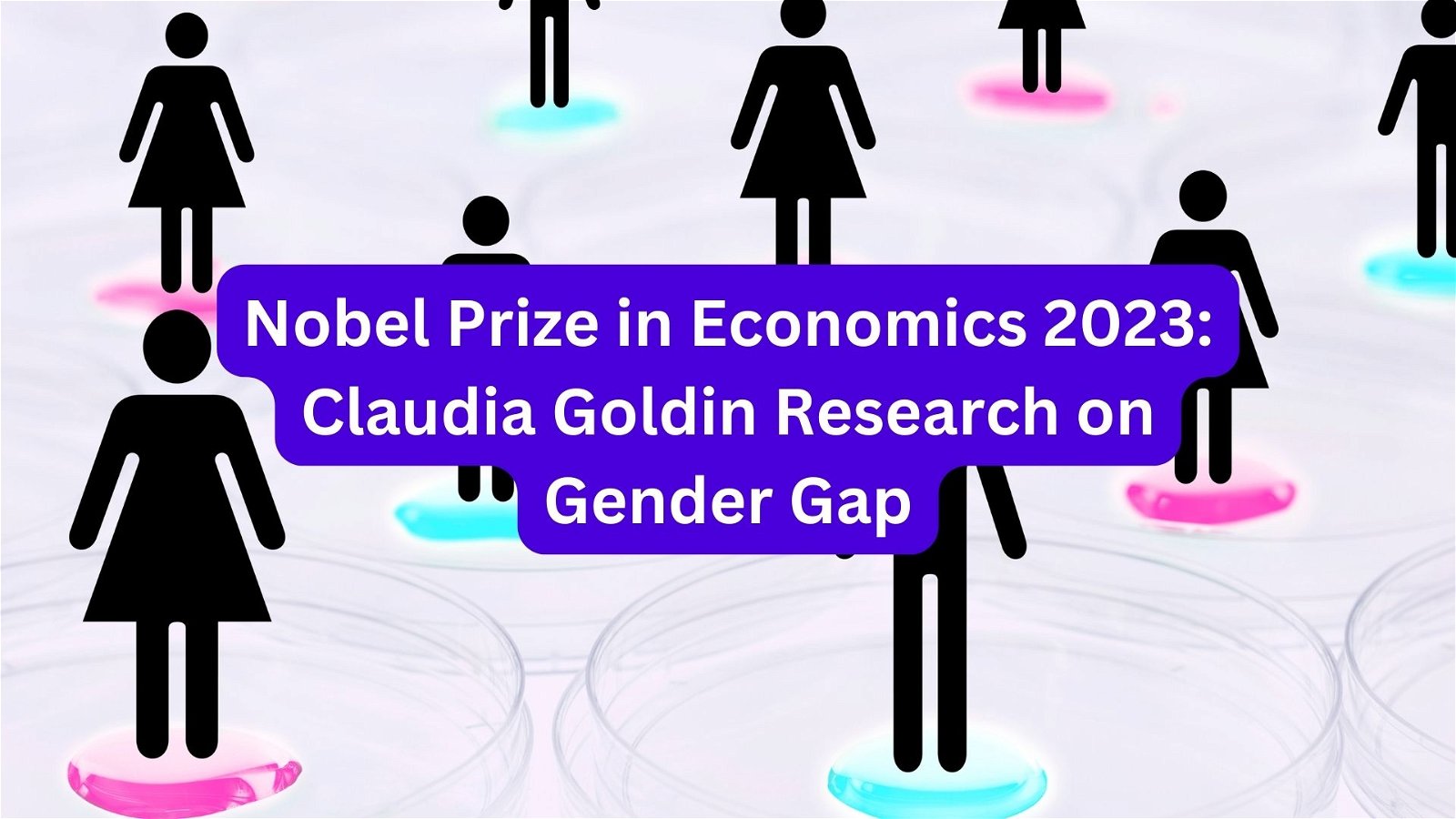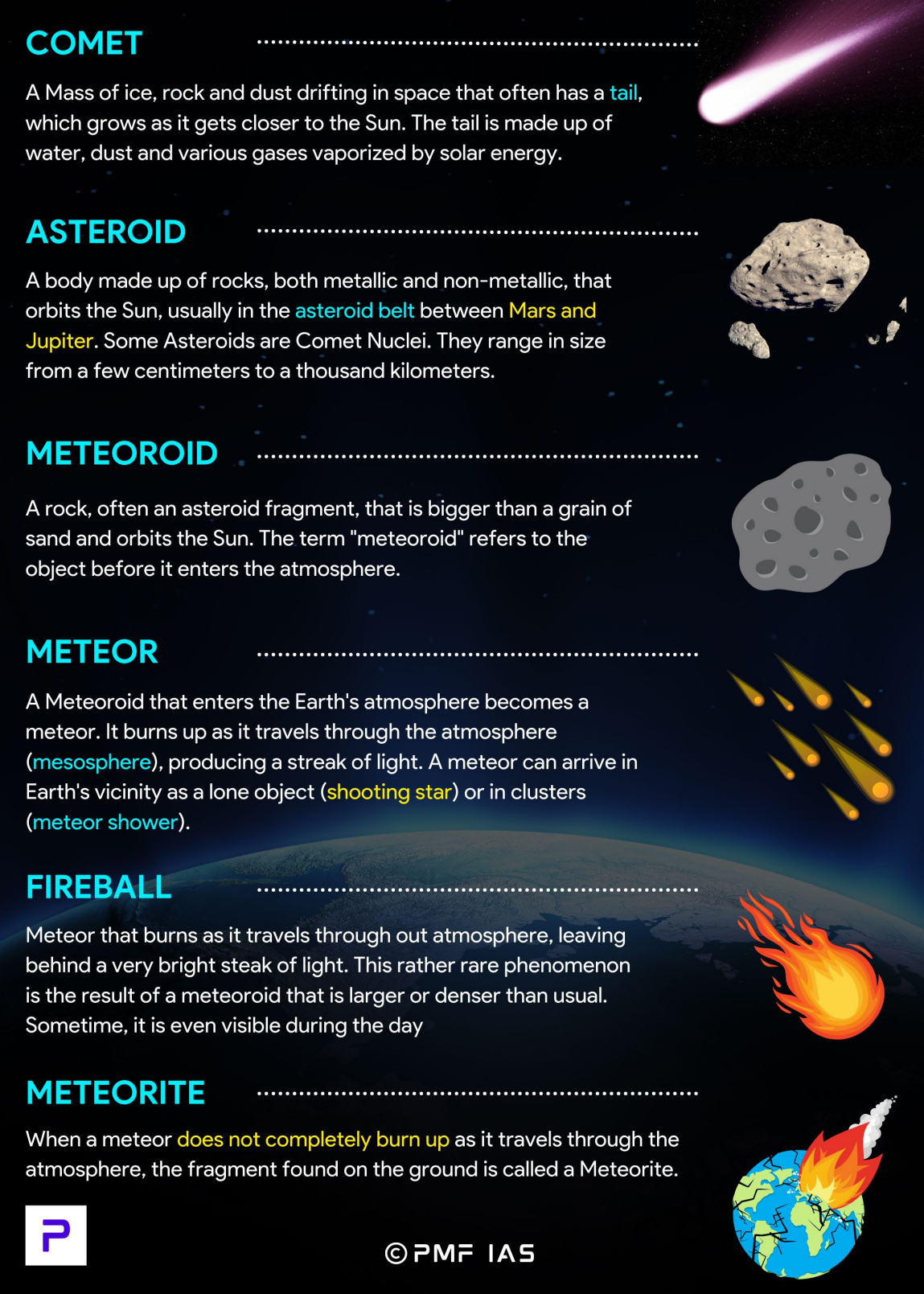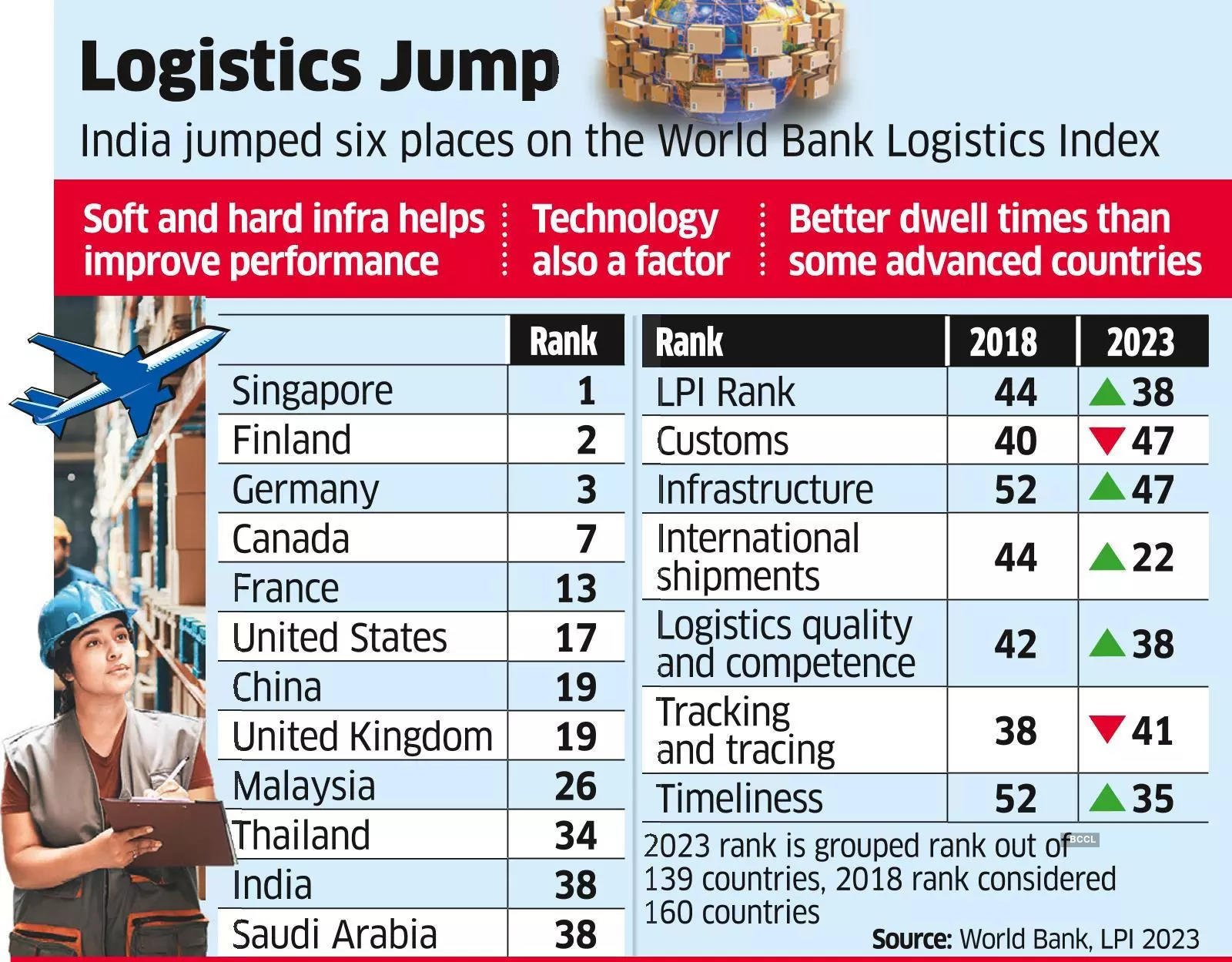
Current Affairs December 17-18, 2023: Kashi Tamil Sangamam, One Person, One Vote, One Value, Akash Missiles, Suspension of MPs, Kaleshwaram Lift Irrigation Project, Debate on Encounter Killings
Subscribers of "Current Affairs" course can Download Daily Current Affairs in PDF/DOC
Subscribe to Never Miss an Important Update! Assured Discounts on New Products!
Must Join PMF IAS Telegram Channel & PMF IAS History Telegram Channel
{GS1 – A&C – Literature} Kashi – Tamil Sangamam
- Context (PIB | IE | TH): During his two-day visit to Varanasi, the Prime Minister will inaugurate the second edition of the Kashi Tamil Sangamam 2023.
- Kashi Tamil Sangamam 2023 was inaugurated in Varanasi, Uttar Pradesh.
- It is the second edition of the initiative, to be held from December 17 to December 31.
- The first edition was organized as a part of the “Azadi ka Amrit Mahostsav” celebration in 2022.
- It celebrates the historical and civilisational connection between India’s North and South.
- Multi-language and braille translations of Thirukkural, Manimekalai, and other classic Tamil literature were also launched at the event.
- The Kanyakumari – Varanasi Tamil Sangamam train was also flagged off by the PM.
- BHU and IIT-Madras are knowledge partners for the event.
Tirukkural
Manimekalai
|
Historical and Cultural Connection between North-South
- As per the Brahmanda Purana, King Dasharath of Ayodhya is believed to have visited Kanchipuram to seek blessings from Amba Kamakshi.
- Story of King Parakrama Pandya of Madurai in the 15th century constructing the Shiva temple of Sivakasi, Tamil Nadu, links Kashi to the South.
- Pandyas had built the Kasi Viswanathar Temple in Tenkasi in southwestern Tamil Nadu, also linked to a visit to Kashi.
- Trade links between the silk cities of Varanasi and Kanchipuram were also culturally significant for people-to-people contact.
{GS2 – Governance – Initiatives} Viksit Bharat Sankalp Yatra
- Context (PIB | IE | TH): During his two-day visit to Varanasi, the Prime Minister will participate in the Viksit Bharat Sankalp Yatra, laying the foundation stone for 37 projects worth Rs 19,155 crore.
- Viksit Bharat Sankalp Yatra is the largest-ever outreach initiative of the Government of India.
- It will cover 2.60 lakh Gram Panchayats and 4000+ urban local bodies nationwide by January 25, 2024.
- It will promote and monitor flagship central schemes like Ayushman Bharat, Ujjwala Yojana, PM Suraksha Bima, PM SVANidhi, etc.
- It was launched on November 15 from Khunti, Jharkhand.
- People can take the ‘Sankalp’ (pledge) by filling out a form on the scheme’s website to download a certificate.
Aims of Viksit Bharat Sankalp Yatra
- It aims to reach out to eligible but unreached beneficiaries.
- Yatra involves the dissemination of information.
- “Meri Kahani Meri Jubani” initiative envisages raising awareness through personal stories.
- It targets the enrollment of potential beneficiaries of central schemes.
Issues With The Move
- Politicisation of the bureaucracy and the military: Joint Secretaries, Directors, and Deputy Secretaries will be appointed nodal officers for the roadshow. The Ministry of Defence is setting up ‘selfie points’ at prominent locations.
- Outreach is limited to nine years: The outreach is only about achievements of the last nine years that correspond to the two terms of the ruling government that began in 2014.
- Partisan: The directives force bureaucrats into partisan roles to further the ruling party’s interests.
Way Forward
- India’s constitutional governance scheme envisages the separation of power among the three arms of the state: the executive, the judiciary, and the legislature.
- There is also a line of separation between the bureaucracy and the military from the political executive, and thus, they need to be insulated from partisan politics.
{GS2 – Governance – Issues} Freebies Culture in Indian Politics
- Context (IE): Recently conducted assembly polls and upcoming Lok Sabha elections once again brought the freebies debate to the forefront.
What is Freebie?
- Freebies are short-term, populist measures without a long-term vision. They differ from welfare measures, which enforce the Directive Principles of State Policy.
- The RBI defined freebies as “a public welfare measure that is provided free of charge”. It has distinguished freebies from long-term welfare measures. However, the Election Commission of India has not defined freebies in legal and objective terms.
Background of freebies in Indian politics
- Kumaraswami Kamaraj’s Initiatives (1954-1963): Introduced free education and free meals for school students in erstwhile Madras state.
- CN Annadurai’s Promise (1967): DMK founder Annadurai continued the trend, promising 4.5 kg of rice for Re 1 if elected as part of their electoral strategy.
- DMK in 2006 elections: In the 2006 state election, DMK elevated the freebie trend by offering colour televisions to voters.
- Cycle of Competitive Freebies: A trend ensued where political parties compete by offering various incentives, including gas stoves, cash handouts, pieces of land, smartphones, and maternity assistance.
Two schools of thought on the welfare
- One school favours freebies with the need for certain basic amenities for empowerment and welfare.
- Another school rejects referring freebies as unproductive doles generating no welfare.
Arguments in favour of Freebies
- Productivity Enhancement: Freebies ensure the fulfilment of the population’s basic needs, resulting in good health and consequential productivity.
- More disposable income: With more disposable income supplemented by freebies, the economy may have a multiplier effect. For instance, reduced out-of-pocket expenditure occurred due to the Ayushman Bharat initiative.
- The government’s responsibility to fulfil the population’s basic needs is an established governance principle.
- Article 38 and the Preamble of the Indian Constitution envisage the Indian state as a welfare, socialist state. It emphasises the just social order.
- Socio-Economic Upliftment: Former CEC S.Y.Qureshi favours free food grains and supports them to counter deep-seated inequality and poverty in India. The same can be observed in Pradhan Mantri Garib Kalyan Anna Yojana.
- Not legally corrupt: In the S. Subramaniam Balaji vs Government of Tamil Nadu case (2013), the SC held that as long as public funds were spent based on appropriations cleared by the legislature, they could neither be declared illegal nor the promise of such items be termed a ‘corrupt practice’.
- Digital Empowerment: Free laptops, smartphones, internet have now become necessities for not only availing government schemes but also for education and learning.
- Women Empowerment: With female pensions and free equipment like sewing machines, the socio-economic empowerment of women is being observed. NITI Ayog report observed increased enrollment with free bicycles to female students in Bihar.
Arguments against Freebies
- Skewed Expenditure: With a greater share of freebies and populist measures, government expenditure favours certain sections. For instance, Rajasthan’s decision to revert to the old pension scheme favours 6% of the population yet costs 56% of the state’s revenues.
- No Productivity Enhancement: MNREGA and other cash handouts are criticised based on poor or no productivity.
- Environmental Unsustainability: The CAG report observed that free electricity for farmers in Punjab led to over-exploitation, a decline in groundwater level, and poor performance of DISCOMs.
- Fiscal Challenges and Debt Burden: In a PIL, the Supreme Court bench has discussed that the economy is becoming unsustainable because of freebies. Former Finance Commission chairman N.K.Singh also cautioned against the same.
- Low Infrastructure investment: With more allocations to freebies, investment in infrastructure projects falls at the backfoot.
- Dependency Syndrome: By recognising freebies as entitlements, the population may be less incentivised to be productive.
Way Forward
- Expert Committee: The Supreme Court has suggested setting up an expert committee consisting of various stakeholders, including members from the Niti Aayog, the Finance Commission, and the RBI, to look into the issue of freebies and their impact on the economy and democracy.
- Priority to Investment: The Economic Advisory Council to the Prime Minister (EAC-PM) member suggested that ‘open-ended’ freebies should be ‘discouraged‘ and the amount can be utilised for building infrastructure or investing in the health and other sectors.
- Amendment of the FRBM act to include all sources of debt and off-budget financing can be done. It would result in democratic fiscal accountability.
- The Election Commission of India needs to be empowered to stricter implementation of the Modal Code of Conduct to counter such corrupt practices during elections.
{GS2 – IR – UN} United Nations Convention Against Corruption (UNCAC)
- Context (TH): 20 years of the United Nations Convention against Corruption.
- It is the 1st legally binding international anti-corruption agreement.
- UNCAC entered into force in December 2005.
- Parties: 190 (including India).
- The United Nations Office on Drugs and Crime (UNODC) was designated as a secretariat for the Convention’s conference of state parties.
- Areas covered:
- Criminalisation and law enforcement
- Preventive measures
- International cooperation
- Asset recovery
- Technical exchange and information exchange
United Nations Office on Drugs and Crime (UNODC)
- UNODC was established in 1997 through a merger between the United Nations Drug Control Programme and the Centre for International Crime Prevention.
- It was renamed the United Nations Office on Drugs and Crime in 2002.
- Headquarters: Vienna, Austria.
- Mandate: To assist Member States in their struggle against illicit drugs, organized crime and trafficking, crime prevention, corruption, and terrorism.
- It is a member of the United Nations Development Group (UNDG).
- It implements conventions like United Nations Convention against Transnational Organised Crime (UNTOC) and United Nations Convention Against Corruption (UNCAC)
- It publishes World Drug Report annually.
{GS2 – Polity – IC – Elections} One Person, One Vote, One Value
- Context (TH I TOI I IE): The SC has directed the GoI to establish a Delimitation Commission to address the need for increased reserved seats for SCs and STs in Lok Sabha and State assemblies.
What is One Person, One Vote, One Value?
- One Person One Vote One Value is a principle that ensures every individual has an equal right to vote and every vote is equal in value. This principle is essential in any democratic society where citizens have an equal say in decision-making.
Significance of One person, One vote, One value
- Ensures fairness in the electoral process by giving everyone an equal chance to have their voice heard.
- Prevents discrimination based on race, gender, religion, or any other factor that could be used to exclude people from the electoral process.
- Encourages participation: When citizens know that their vote has the same value as anyone else’s, they are more likely to participate in the electoral process.
- Ensures representation: It ensures that elected officials truly represent the views and interests of all citizens, not just a select few.
- Ensure political equality as IC provides equality of opportunity to participate in the political decision-making process.
Dilution of Principle of One person, One vote, One value
Quantitative dilution
- Quantitative dilution happens when votes receive unequal weight due to deviations in the population among the constituencies.
|
Qualitative dilution
- It happens when a voter’s chance of electing a representative of its choice is reduced due to gerrymandering (redrawing of boundaries to favour a candidate/party).
- Qualitative dilution of vote value parity can be used to sideline or make minority votes insignificant.
- It is done majorly in three ways:
- Cracking: Where areas dominated by minorities are divided into different constituencies.
- Stacking: Where the minority population is submerged within constituencies where others are in majority.
- Packing: Where minorities are packed within a few constituencies.
- This is highlighted in the National Commission to Review the Working of the Constitution and the Sachar Committee Report:
- In a majority of the seats reserved for SCs by the Delimitation Commission (1972-76), the population of Muslims was more than 50% and also higher than the SC population (If the seats were not reserved, Muslim candidates could have won).
- Constituencies that had a large SC population and a lower Muslim population were declared unreserved. This has a major impact on the number of Muslim representatives in Parliament.
|
Constitutional Safeguards to avoid Dilution
- Articles 81 and 170 of IC state that the population ratio for the Lok Sabha and State Legislative Assembly constituencies shall be the same as far as practicable.
- Article 327 of IC empowers Parliament to make laws related to the delimitation of constituencies, which cannot be questioned in a court of law.
- As per the Delimitation Commission Act 1952 and Art 329A of the IC, the Commission’s orders are final and have the “full force of law and shall not be called into question in any court”.
- Articles 330 and 332 of IC guarantee the reservation of seats for SCs and STs in Parliament and State Legislative Assemblies.
Delimitation
Delimitation Commission
|
{GS2 – Polity – IC – Parliament} Suspension of MPs
- Context (TH | IE): Several Opposition Members of Parliament (MPs) of Lok Sabha were suspended in for disrupting the proceedings of the House.
Process of Suspension of MPs in Lok Sabha
- Rule 373 of the Rules of Procedure and Conduct of Business empowers the Speaker to direct a member to withdraw immediately on account of disorderly conduct.
- Members shall do so forthwith and remain absent from the sitting of the house during the remainder of the day.
- Rule 374: The Speaker can name a member who continues to disregard the authority of the Chair or abuses the rules of the House by persistently and wilfully obstructing the business.
- Once named, the House can move a motion to suspend the MP until the end of the session.
- The member so named will be suspended from the House for a period not exceeding the remainder of the session.
- Rule 374A: It was incorporated in the Rule Book in 2001, to bypass the need for a motion for suspension.
- On being named by the Speaker, the member stands automatically suspended for 5 consecutive sittings or the remainder of the session, whichever is less (no motion is passed).
- Member shall forthwith withdraw from the precincts of the House.
Process of Suspension of MPs in Rajya Sahba
- Rule 255: It empowers the Chairperson to direct a member to withdraw immediately on account of disorderly conduct.
- Rule 256: The House may adopt a motion suspending the Member from the service of the House for a period not exceeding the remainder of the session.
Termination of Suspension
- The House may, by another motion, terminate the suspension.
Difference in powers of Speaker and Chairman Of Rajya Sabha
- Both are empowered to direct any Member, whose conduct is grossly disorderly, to withdraw immediately from the House.
- Unlike the Speaker, the Rajya Sabha Chairman does not have the power to suspend a member automatically (i.e. a motion needs to be passed by the House).
{GS2 – Social Sector – Health – Issue} CT Scans and Cancers
- Context (TH): CT scans associated with increased risk of blood cancers
- A computed tomography (CT) scan is an imaging test that uses X-rays to create detailed cross-sectional pictures of the body’s interior.
- It is used for diagnosing injuries, cancers, infections, heart & lung diseases, & blood vessel issues.
- CT scans involve exposure to ionising radiation.
- Moderate to high radiation doses (100mGy to 1Gy) are now linked to blood cancers and other cancers in both children and adults.
- The discovery emphasises the necessity to justify pediatric CT exams and optimise doses.
|
{GS3 – Envi – Hazardous Waste} E-Waste Management in India
- Context (TH): As per GoI data, over 5 lakh tonnes of e-waste has been collected and processed in the year 2021-22.
- E-waste refers to electronic products that are unwanted, not working, or nearing or at the end of their “useful life.”
Status of E-Waste in India
- As per Global E-waste Monitor 2020, India is the 3rd largest electronic waste producer in the world, generating about 2 million tons of e-waste annually, with its share increasing by 31%.
- Around 95% of e-waste is recycled informally by unorganized workers.
Importance of e-waste management
- Environmental conservation: Improper disposal of waste leads to the release of various harmful toxins like lead, mercury, cadmium, etc.
- Resource conservation: Recycling of e-waste reduces the need for new resource extraction as e-waste contains various valuable materials like gold, silver, etc.
- Economic opportunities: Provide filip to a circular economy, create employment opportunities and promote entrepreneurship.
- Sustainable development: Aligns with the principles of environmental, social and economic aspects by promoting environmental stewardship.
Challenges in e-waste Management
- Poor infrastructure: Shortage of authorised recycling facilities and collection centres leads to waste ending up in unregulated facilities exacerbating environmental degradation.
- Absence of a clear mechanism for collecting and transporting e-waste from consumers to recyclers.
- Inadequate regulatory design and enforcement compounded by a lack of coordination and cooperation among various stakeholders and authorities involved in e-waste management.
- Fragmented supply chain: 95% of waste is recycled by the informal sector which often operates in unsafe and unregulated working conditions.
- Lack of reliable information on e-waste generation rates, its types making it difficult to plan and implement effective policies and strategies.
- Lack of awareness: Many consumers and stakeholders are not aware of the environmental and health impacts of e-waste, or the benefits of proper disposal and recycling.
Way Forward
- Provide market information about e-waste prices to create a transparent and competitive market for e-waste collection and recycling.
- Incentivizing formal e-waste recycling by providing financial support, tax benefits, subsidies, or recognition to formal e-waste recyclers.
- Recognize informal sector as the stakeholder in future e-waste regime and integrating them into the formal system through certification, registration, or partnerships.
- Developing innovative technologies for processing new forms of e-waste.
- Enhancing coordination and cooperation among various stakeholders and authorities involved in e-waste management.
{GS3 – Infra – Irrigation} Kaleshwaram Lift Irrigation Project (KLIP)
- Context (TH): Telangana Chief Minister called for an inquiry into irregularities in the Kaleshwaram Lift Irrigation Project (KLIP).
- Issues of submerging piers at the Medigadda barrage and the seepage in the Annaram barrage have brought the project into the limelight.
- KLIP is a multi-purpose lift irrigation project in Telangana redesigned from the Pranahita-Chevella project of erstwhile Andhra Pradesh.
- It is constructed on the Godavari River in Kaleshwaram, Bhupalpally, Telangana, India.
- As of now, it is the world’s largest multi-stage lift irrigation project.
- It is unique in terms of its reverse pumping mechanism.
Godavari Basin
|
Components of KLIP
- It is divided into 7 links and 28 packages through 13 districts along with a canal network.
- It targets sourcing a total of 240 TMC (195 from Medigadda Barrage, 20 from the Sripada Yellampalli project, and 25 from groundwater).
- A barrage is constructed at Medigadda, and the water is reverse-pumped into the main Godavari river and diverted through lifts and pumps into a huge and complex system of reservoirs, water tunnels, pipelines, and canals.
- It envisages four major pumping facilities to manage the project’s outflow. The largest is at Ramadugu and Medaram, Annaram, and Sundilla being the others.
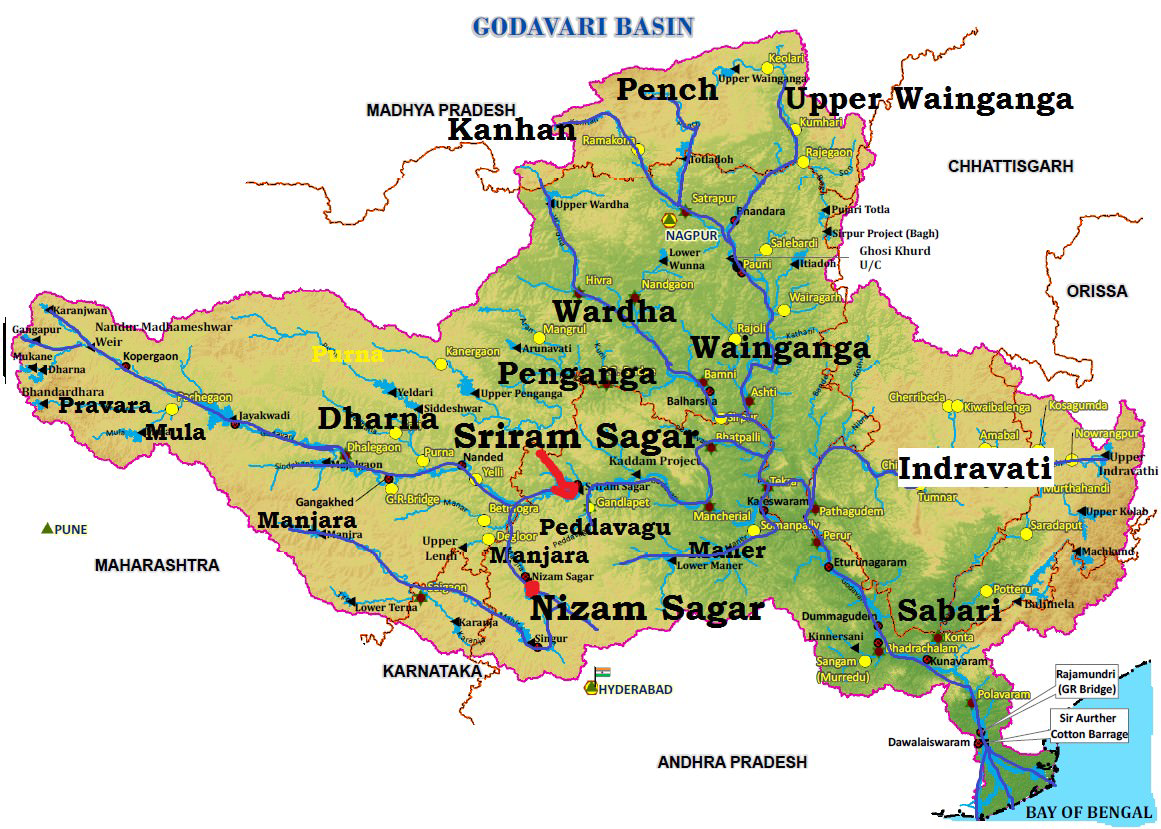


Interlinking of Rivers (ILRs)
|
Advantages of Kaleshwaram Lift Project
- Water availability: It will provide water for irrigation, Hyderabad municipal water supply, industrial uses, and drinking water supply to nearby villages.
- Groundwater level restoration: It will replace the use of groundwater in irrigation with canal water.
- Water Recharge Projects: Mission Kakatiya and Mission Bhagirath for water conservation will also be augmented by water supplied through the KLIP.
- Interstate Water Dispute Resolution: A newly signed agreement between Telangana and Maharastra will address the long-standing interstate river water sharing dispute.
- Improvement in Socio-economic Conditions: Farmers and cultivators around the area are expected to benefit from better irrigation, commercial crop cultivation, and a reduction in the cost of agriculture.
Issues in Kaleshwaram Lift Project
- Impact on Agriculture: Submergence of agricultural areas (especially Chilli cultivation areas) and the consequent impact on the state’s economy remains a significant issue.
- Reservoir-induced Seismicity: It can create reservoir-induced seismicity similar to the Koyna reservoir in the Satara district, thereby increasing the possibility of a massive earthquake.
- Environmental Issues: Unusual dam orientation parallel to the stream in Mallannasagar may lead to waterlogging and artesian conditions due to a high hydraulic gradient.
- Displacement Issues: It will submerge 19 villages, resulting in huge socio-economic costs.
- Credibility of Estimates: Many experts are challenging the estimated figures of benefits and associated costs of projects.
- Construction Irregularities: Recently surfaced construction and repair issues raise a question about the project’s long-term vision.
Way Forward
- National Dam Safety Authority emphasized complete rehabilitation to avoid any compromises in the Medigadda barrage.
- Rehabilitation and relief package needs to be revisited to resolve the ‘developmental displacement’ issue.
- The project should undertake corrections as being studied by the Anil Jain (Center Water Commission member) committee — appointed by the Ministry of Jal Shakti to study the recent issues in the KLIP- Medigadda barrage.
{GS3 – S&T – Defence} Akash Missiles
- Context (TH | BS | ANI): Looking to export its indigenous weapon system, India demonstrated Akash Missile Systems’ capability during Exercise Astrashakti 2023.
- Akash Missile System engaged four aerial targets simultaneously, making India the first to achieve this capability with a single firing unit.
- Akash is India’s first indigenously produced short-range (up to 25 km) Surface-to-Air missile.
- The Defence Research and Development Organisation (DRDO) developed it to protect vulnerable areas and points from air attacks.
- This nuclear-capable supersonic missile can reach speeds up to Mach 2.5 (860 m/sec).
- The missile system is among the key platforms India exports to friendly foreign countries.
- Akash has been developed under the Integrated Guided Missile Development Program (IGMDP).
Integrated Guided Missile Development Program (IGMDP)
- IGMDP was a Ministry of Defence programme for developing a comprehensive range of missiles.
- Dr A P J Abdul Kalam conceived it to achieve missile technology self-sufficiency in India.
- It was started in 1983 and completed in 2012.
- Under IGMDP, the development of five missile systems was taken up.
| Missile Systems Developed under IGMDP |
| Prithvi (Short-range surface-to-surface ballistic missile) |
| Agni (Only Agni-I: Intermediate-range surface-to-surface ballistic missile) |
| Trishul (Short-range surface-to-air missile) |
| Akash (Short-range surface-to-air missile) |
| Nag (Third generation anti-tank missile) |
{GS3 – S&T – Nuclear Power} Nuclear Criticality: First Step Towards Generation of Nuclear Power for Commercial Use
- Context (TH | TP): India’s second indigenous 700 MWe nuclear reactor at Kakrapar Atomic Power Station (KAPS) in Gujarat moves closer to commercial operation after achieving first criticality.
|
- These reactors are pressurised heavy water reactors (PHWRs), which use natural uranium as fuel and heavy water as coolant and moderator.
- The reactor achieved criticality after meeting the specified conditions of the Atomic Energy Regulatory Board (AERB), India’s nuclear safety regulator.
Nuclear Fission
- Nuclear fission splits a heavy atomic nucleus into two smaller nuclei, releasing energy through heat, light, and radiation.
- Radioactive atoms (or isotopes) are used in nuclear fission.
- Uranium-235 (U-235) and plutonium-239 (Pu-239) are commonly used isotopes for fission.
- U-235, a rare isotope of the heavy metal uranium, is the most commonly used nuclear fuel.
Radioactive Atoms (or Isotopes)
|
How does Nuclear Fission take place?
- The nuclear fission is initiated by subjecting a U-235 or Pu-239 nucleus to neutrons.
- The nucleus absorbs an extra neutron, becomes unstable, and splits into two lighter atoms and additional neutrons. This process releases what is known as atomic energy.
- The fission of a U-235 or Pu-239 atom produces about 2 to 3 new neutrons.
- If other U-235 or Pu-239 atoms absorb these new neutrons, it creates an exponentially growing chain reaction. Such a chain reaction releases large amounts of energy.

Controlled Nuclear Fission
- If controlled in a nuclear reactor, such a chain reaction from nuclear creation can generate power.
- If uncontrolled, it can lead to an enormous explosion (atomic bomb).
- For a self-sustained, controlled nuclear reaction, only one neutron should strike another uranium nucleus for every 2 or 3 neutrons released.
- If this ratio is less than one, the reaction will die out; if it is greater than one, it will grow uncontrolled.
Nuclear Criticality
- In nuclear reactor operation, criticality is the self-sustaining state of a nuclear chain reaction.
- When there is a perfect balance between neutron production and loss rates, the nuclear system is considered critical.
- During reactor startup, neutron population is gradually increased in a controlled manner, ensuring more neutrons are produced than lost.
- When the desired power level is achieved, the nuclear reactor is placed into a critical configuration.
|
India and the Importance of Commercial Nuclear Energy
- India is facing the dual challenge of development and environmental sustainability.
- Amidst escalating climate change concerns, the global community advocates phasing out fossil fuels, India’s most important energy source.
- In the recent UNFCCC COP 28 (UAE), the major push was in favour of phasing out fossil fuels.
- But India is pitching for phasing down rather than phasing out fossil fuels.
- India contends that, as a developing nation experiencing rapid economic growth, phasing out fossil fuels would impede its economic progress.
- Moreover, India asserts that, as a non-historical emitter, it should not be disproportionately burdened as it goes against the Common But Differentiated Responsibilities and Respective Capabilities (CBDR-RC) principle, enshrined in the Earth Summit 1992.
- At COP 28, 22 countries have pledged to triple global nuclear capacity by 2050 for a net-zero emissions goal. India has abstained from this commitment.
- None of these means India is against adopting alternative energy sources for protecting the environment. It simply means India wants the process to be gradual rather than sudden and rushed.
- India has set its target to reach net-zero emissions by 2070.
- Nuclear energy is a renewable energy source that does not emit greenhouse gases, so India wants to increase its share to meet its climate goals.
- It aims to generate 50% of its total electricity from non-fossil fuel sources by 2030, based on its commitment at the COP 26 in Glasgow in 2021.
- As of 2023, India’s total generation capacity is 417 GW, with 43% coming from renewable sources.
- India stands alone among developing nations in generating electricity using domestically developed, demonstrated, and deployed nuclear reactors.
- Nuclear energy is India’s fifth-largest source of electricity.
- India aims to boost its nuclear power contribution from 3.2% to 5% by 2031.
Challenges for the Nuclear Sector to Meet Net-Zero Emission Target
- High initial investment: Complex technology makes building new nuclear power plants expensive.
- Decommissioning costs: Dismantling nuclear plants at the end of their lifespan is complex and costly.
- Safety concerns: E.g., the Chernobyl and Fukushima disasters.
- Nuclear waste disposal: Safe, long-term storage for radioactive waste is vital for the sustainability of nuclear energy.
- Thermal pollution: Nuclear plants release heated water, impacting aquatic ecosystems.
- Public perception: Public concerns about safety, waste disposal, and nuclear weapons proliferation can limit public support for nuclear energy.
- Regulatory framework: Complex regulations can increase costs and delays in nuclear projects.
- Fuel availability: While uranium resources are relatively abundant, supply chain risks and geopolitical factors necessitate careful planning and source diversification.
Way Forward
- Scaling up capacity: The government aims to triple nuclear power capacity by 2032, with plans to increase it from 6,780 MW to 22,480 MW by 2031.
- Embracing advanced technologies: Moving beyond Pressurized Heavy Water Reactors (PHWRs), India is exploring Light Water Reactors (LWRs) and Small Modular Reactors (SMRs). These offer faster deployment, potentially lower costs, and enhanced safety features.
- Leveraging the Thorium advantage: India boasts the world’s largest thorium reserves, a cleaner and more abundant fuel than uranium. Developing Thorium-based Advanced Reactors (TARs) could revolutionise India’s energy sector, reducing imports and minimising waste.
- Addressing public concern
- Ensuring safety and security
- Regulatory measures
- Waste management solutions
{GS4 – Ethics – Issues} Debate on Encounter Killings
- Context (TH): A Gangster wanted in 25 criminal cases was killed in a police encounter by Punjab Police.
What are Extra Judicial Killings?
- These are acts of violence carried out by law enforcement agencies without any judicial authorization.
- It is usually done to enforce ‘instant justice’/‘vigilante justice’ by circumventing the elaborate procedure established through the criminal justice system.
Vigilante Justice
|
Legal Provisions Related to Encounters in India
- Indian Penal Code provides no mention of encounters or extra-judicial killings.
- However, there are enabling provisions for extra-judicial killings in various laws in India:
- Section 106 of IPC: Right of private defence against deadly assault when there is risk of harm to innocent person.
- Section-46 of Criminal Procedure Code (CrPC): It authorizes police to use force, extending up to the cause of death, as may be necessary to arrest the person accused of an offence punishable with death or imprisonment for life.
- Section 4 of the Armed Forces (Special Powers) Act (AFSPA), 1958: It authorises every commissioned, non-commissioned or warrant officer to fire or use force, even to the causing of death of any person who the officer believes to be acting in contravention of any law in a disturbed area and considers necessary for the maintenance of public order.
Why do People Favour Encounters?
- Loss of faith in the criminal justice system due to pendency of cases. For eg, Nirbhaya case.
- Increasing clout of criminals with money and political connections.
- ‘Doctrine of proportionality’ justifying encounter as rightful punishment for misdeed by the accused.
- Act as deterrence for heinous crimes in the society.
- Law of Necessity: ‘Id Quod Alias Non Est Licitum Facit’ meaning that which is otherwise not lawful becomes lawful if necessity demands
Ethical Issues Involved in Encounters
- Violation of human rights: It impinges on the Right to Life enshrined under Art 21 of the IC.
- Against the right to legal form of procedural justice, and equality before the law.
- Virtue Ethics: Justice, its cardinal virtue is compromised given that the suspect is denied the basic right to present against claims made.
- Utilitarianism: Harm done may be disproportionate to the crime committed by the accused.
- Against professional ethics of police.
- Against reformative principle which argues that every individual is subject to reform.
- Against deontology which prescribes that means must justify the end.
Way Forward
- Overhauling the criminal justice system to maintain credibility among the public.
- Timely investigation of encounter killings and timely punishment to act as deterrence in the future.
- Putting in place standard operating procedure to be followed by Police to deal with dreaded criminals.
- Implementing the directions of SC spelt out in Prakash Singh vs Union of India case.
SC Rulings on Encounters
- D.K. Basu vs. State of West Bengal (1996): Extra-judicial killings violate the dignity of human being.
- Prakash Kadam vs. Ramprasad Vishwanath Gupta (2011): It said that if the verdict in an extrajudicial execution went against the policemen on trial, they must be given the death sentence.
- Om Prakash and Ors. vs. State of Jharkhand (2012): SC held extra-judicial killings are not legal under the criminal justice administration system of India and equated them to ‘state-sponsored terrorism’.
- PUCL vs. the State of Maharashtra (2014): SC laid down standard procedure to be followed for independent investigation in cases of police encounters.
{Prelims – Envi – Species} Blind Golden Mole (Cryptochloris wintoni)
- Context (WION): A blind golden mole has been rediscovered in South Africa 87 years after it was declared extinct.
- Blind golden mole (or De Winton’s golden mole) is a mammal species.
- Distribution: It is endemic to South Africa.
- Habitat: Its natural habitats are subtropical dry shrubland, Mediterranean-type shrubby vegetation, and sandy shores.
- Threats: Habitat destruction
- Conservation status: IUCN: CR

{Prelims – Sci – Chemistry} Ketamine
- Ketamine is an anaesthetic listed as a hallucinogen by the US Drug Enforcement Administration.
- It is used for treating mental illnesses in conventional therapy-resistant patients.
- It is also used as a recreational drug.
- Concerns: Bladder damage, cognitive impairment, addiction, and worsening of psychiatric conditions.
Recreational Drug
|





![PMF IAS Environment for UPSC 2022-23 [paperback] PMF IAS [Nov 30, 2021]…](https://pmfias.b-cdn.net/wp-content/uploads/2024/04/pmfiasenvironmentforupsc2022-23paperbackpmfiasnov302021.jpg)
